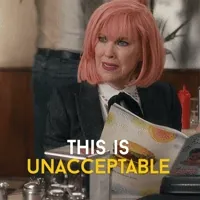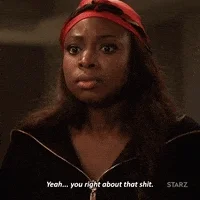
In Fassett and Warren's Critical Communication Pedagogy, they discuss the syllabus as critical intervention, a method of safe vulnerability. Within the classroom, they allowed students to alter the syllabus in which ever way the deemed fit, performing surgery on the structure of the course. The example provided in the book related to a professor allowing students the opportunity to design the class a they please. Students within the course would remove readings in the syllabus and add others, choose which assignments did not fit within their interests and other assignments the students wanted to work with, and even gave students the agency to create their own grading criteria. The professor felt vulnerable at times, as if too much power was given to students, but also felt a sense of security knowing that removing an element of power in the student-professor relationship resulted in student empowerment. Removing the distance of power within the student-professor relationship provides students with the opportunity to become more engaged with course material, knowing they have a considerable amount of agency in the learning process. Giving students more agency in the learning process gives tends to divert the typical learning style everyone is used to, dare I say... #shakennotstirred?

As an undergraduate student, I never had too much say into how a course is structured or which components find their way into a syllabus. Some instances occurred in a class or two where I had the opportunity to not take the final if I was present everyday in class and made an "A" on every exam, or I could drop my lowest quiz grade. I was enrolled in COMM 3620- Intercultural Communication (subtle Karen cameo), where she allowed us to come up with our own essay questions for the exam which gave us more freedom into what we could study for. In our current COMM 5085 Pedagogy course, Karen gave us the opportunity to create our own criteria for how we would want our blog posts to be graded and for us to dictate point allocation. As a student I notice great potential for having students participate in syllabus structuring, to an extent of course. Giving students the agency to create their own grading criteria and ability to add/remove assignments will remove the power distance in the student-professor relationship and has the possibility to increase student participation. As a current instructor and future professor (hopeful), I plan to structure my own course one day and utilize Fassett and Warren's notion of safe vulnerability. As a teacher, being vulnerable within the classroom has many benefits and if properly implemented under the assumption of safety, the classroom environment can emerge into a successful learning environment where students not only engage, but WANT to engage. How many more times do we have to hear, "It's in the syllabus," or "Did you look in the syllabus?," before we decide safe vulnerability is beneficial and students can actually engage in shaping the syllabus and structure of the course. Learning is not suppose to boring and repetitive, learning should be a constant attempt to be different and promote learning in new ways to make students WANT to learn! I have to go pick up the mic... Because I dropped the mic. #shakennotstirred

Zane when we were assigned the course syllabus project in this class, I researched so many AMAZING and cool syllabi. Like you said, as students we will sometimes go look at a syllabus first before we decide to take the course. I think as teachers we should think outside of the box when it comes to our syllabi, whether that is creating a really intriguing visual syllabus with video, cool graphics etc. It gives another opportunity to make students excited about learning.
ReplyDeleteZane, I deeply appreciate your commentary on Fassett and Warren’s method of safe vulnerability and how it relates to power mechanisms in the classroom. Traditionally educated teachers and students tend to balk at vulnerability and resist being fully transparent with themselves, which is why I love Fassett and Warren’s concept of vulnerability as performative pedagogy (p. 93). I do like the idea of presenting a syllabus and/or a rubric as a venue to host a logical compromise. I appreciate you mentioning how Karen did this with us when she had us design the rubric for the Blog assignments. While the process certainly stimulated a sense of agency over the assignment, and “empowered by [our] ability to help shape the environment of the classroom” (p. 113), I think having such a level of agency made me a bit careless as far as managing my blog posts as a series of concurrent assignments, instead of one big assignment with a hard deadline. While we do have a due date, I think Karen intended this assignment to be distributed throughout the semester; the opposite of what I am doing this weekend!
ReplyDeleteHi Zane! I can also vouch for the effectiveness of creating your own essay questions in COMM 3260 :) I LOVE the idea of students being more actively engaged in how they're processing the content and giving them more agency in the classroom, specifically when it comes to syllabus structure and creation. I also love your distinction between the desire to engage, and simply engaging in the classroom out of an unspoken obligation.
ReplyDeleteI have to agree about the COMM 3620 thing! I think it's so much more fun to grade things that a student is truly engaged with, anyway! But allowing a student to have agency and a sense of choice in the assignment they turn in also makes them more likely to actually work hard on the assignment, in my opinion as a former undergrad. I also like the opportunity to get to know my students and their interests, which I think comes along with giving them some agency at times, like Karen did with us.
ReplyDelete